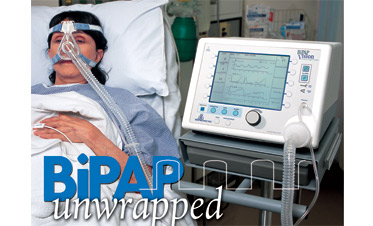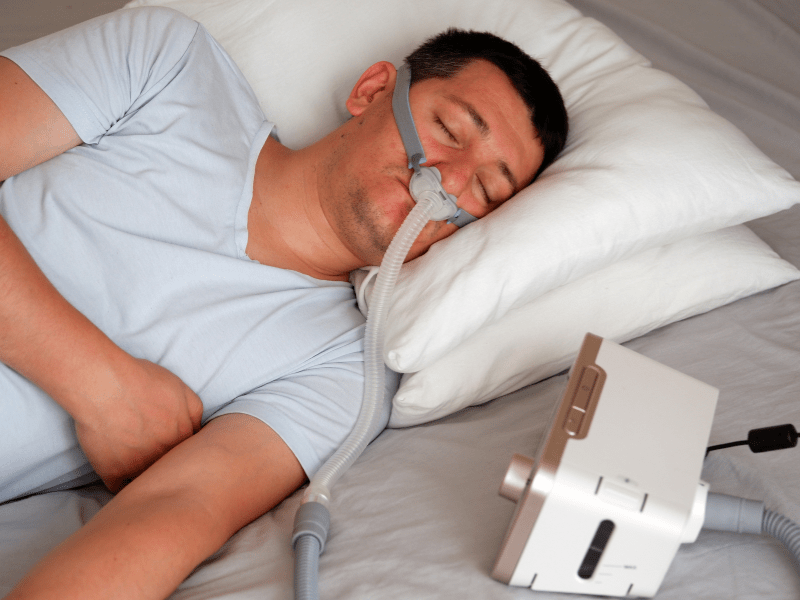BiPAP Rental: Hassle-Free Solutions for Temporary Requirements
BiPAP Rental: Hassle-Free Solutions for Temporary Requirements
Blog Article
Bipap vs. CPAP: Which Is the Best for Your Sleep Disorder?
When navigating the complexities of sleep disorders, the choice between BiPAP and CPAP treatment is an important factor to consider. Each technique provides distinct benefits customized to certain conditions, yet the decision rests on specific client requirements and comfort degrees. While CPAP gives a consistent air flow suitable for obstructive rest apnea, BiPAP's twin stress setups might enhance comfort for those with more elaborate respiratory problems. Recognizing these distinctions can considerably impact therapy effectiveness, leaving one to ponder which alternative genuinely lines up with their health needs and way of life.
Comprehending Rest Disorders
Rest conditions encompass a variety of problems that interrupt normal sleep patterns, influencing both the quality and duration of rest. These problems can manifest in numerous kinds, consisting of sleep problems, sleep apnea, narcolepsy, agitated leg disorder, and parasomnias. Each problem provides one-of-a-kind challenges, commonly resulting in considerable daytime exhaustion, cognitive disability, and psychological disturbances.
Sleeplessness is characterized by problem dropping or remaining asleep, while sleep apnea includes duplicated interruptions in breathing during rest, usually bring about fragmented remainder. Narcolepsy, on the various other hand, is marked by extreme daytime sleepiness and unexpected rest attacks. Uneasy leg disorder creates unpleasant feelings in the legs, motivating an uncontrollable urge to move them, which can likewise impede the capacity to drop asleep.
The influence of rest problems expands past individual health, influencing general efficiency, partnerships, and top quality of life. Understanding the particular nature of each disorder is vital for reliable medical diagnosis and therapy. As rest health and wellness ends up being progressively acknowledged as a crucial element of general well-being, attending to these conditions is crucial for improving both sleep high quality and daily functioning.
Just How CPAP Functions
Continual Positive Air Passage Pressure (CPAP) therapy is frequently used as a key therapy for obstructive sleep apnea (OSA) The system of CPAP involves using a device that delivers a constant stream of air via a mask used during rest. This airflow keeps positive pressure in the air passage, protecting against the collapse or blockage of the throat that can occur throughout rest.
When a client takes in, the CPAP equipment supplies a continual circulation of air, guaranteeing that the airway continues to be open - BiPAP Rental. This not only minimizes the symptoms of OSA, such as snoring and interfered with sleep patterns, yet likewise reduces the affiliated health and wellness threats, including cardio issues and daytime fatigue
The stress setups on a CPAP device can be personalized to fulfill individual client requirements, frequently figured out with a sleep study. In general, CPAP therapy has actually been shown to significantly improve the high quality of rest and total wellness for people suffering from obstructive sleep apnea.
How BiPAP Works
BiPAP, or Bilevel Positive Air Passage Stress, is a specific kind of non-invasive air flow that is specifically advantageous for clients with conditions such as complicated rest apnea or breathing conditions. Unlike CPAP, which provides a constant stream of air at a solitary stress, BiPAP supplies 2 unique pressure settings: a higher inspiratory pressure for breathing and a lower expiratory stress for exhalation. This dual-pressure approach permits simpler breathing, minimizing the initiative called for throughout exhalation.
The gadget runs with a mask fitted over the nose or mouth, attached to an equipment that creates atmospheric pressure. When the person breathes in, the equipment supplies the greater stress to help with air movement, ensuring that the respiratory tract visit this page continues to be open. Upon exhalation, the maker immediately reduces the stress, making it a lot more comfortable for the patient to take a breath out.

Key Differences Between BiPAP and CPAP

In comparison, BiPAP (Bilevel Favorable Air passage Stress) supplies 2 various pressure settings: one for inhalation and a lower one for exhalation. This twin stress system allows for more comfy breathing, especially for people that have problem with breathing out versus a continuous stress. BiPAP is often recommended for clients with complex rest apnea, persistent obstructive lung illness (COPD), or those who need added assistance throughout rest.
Furthermore, the intricacy of BiPAP gadgets typically leads to a higher cost and requires a lot more mindful titration than CPAP. BiPAP Rental. Comprehending these vital differences can aid in acknowledging which tool may be preferable for certain sleep disorders, setting the foundation over here for enlightened treatment decisions
Choosing the Right Treatment
The decision in between BiPAP and CPAP treatment mainly pivots on the details attributes of the rest condition, the client's total wellness, and their convenience with the gadget. CPAP, which supplies a continual stream of air, is frequently prescribed for obstructive sleep apnea (OSA)
Alternatively, BiPAP gives 2 degrees of pressure: one for breathing and a reduced one for exhalation. This twin stress system is helpful for people with complex sleep apnea or those that experience problem breathing out versus a continuous stress. Additionally, BiPAP is typically suggested for people with respiratory problems, such as chronic obstructive lung condition (COPD), where varying stress setups can improve comfort and compliance.
Ultimately, a complete assessment by a sleep expert, consisting of a sleep research study, can aid identify which treatment lines up ideal with the client's demands. Elements such as comfort, ease of usage, and specific clinical problems must also be thought about to optimize treatment results.
Conclusion
In summary, both BiPAP and CPAP serve distinct functions in the monitoring of rest disorders. CPAP is efficient for obstructive rest apnea with consistent airflow, while BiPAP supplies dual pressure setups that enhance comfort for those with complex rest apnea or respiratory issues. The choice between these therapies must be guided by individual requirements and problems, demanding an extensive analysis by a rest expert to make sure ideal therapy outcomes and improved quality of rest.

Overall, CPAP therapy has been revealed to significantly boost the quality of rest and general health and wellness for individuals experiencing from obstructive sleep apnea.
BiPAP is typically suggested for people with intricate sleep apnea, persistent obstructive pulmonary illness (COPD), or those that need extra support during sleep.
CPAP is effective for obstructive rest apnea via consistent air flow, while BiPAP offers twin stress setups that enhance comfort for those with complex sleep apnea or breathing issues.
Report this page